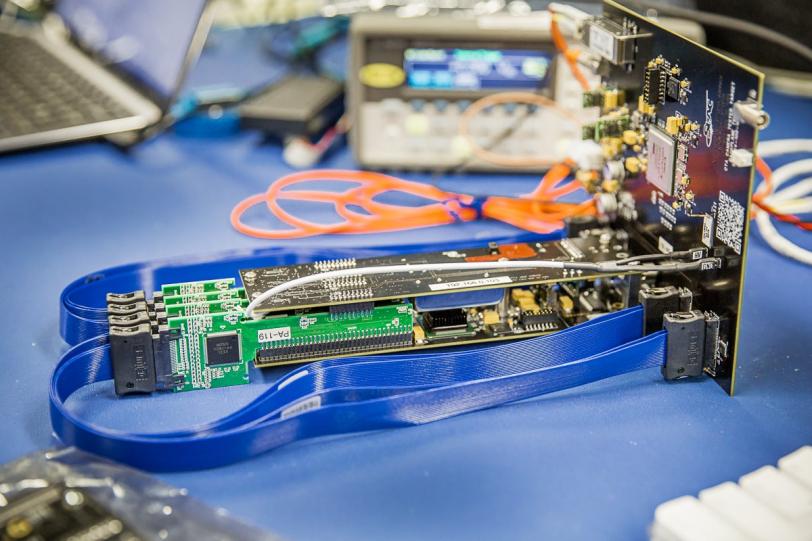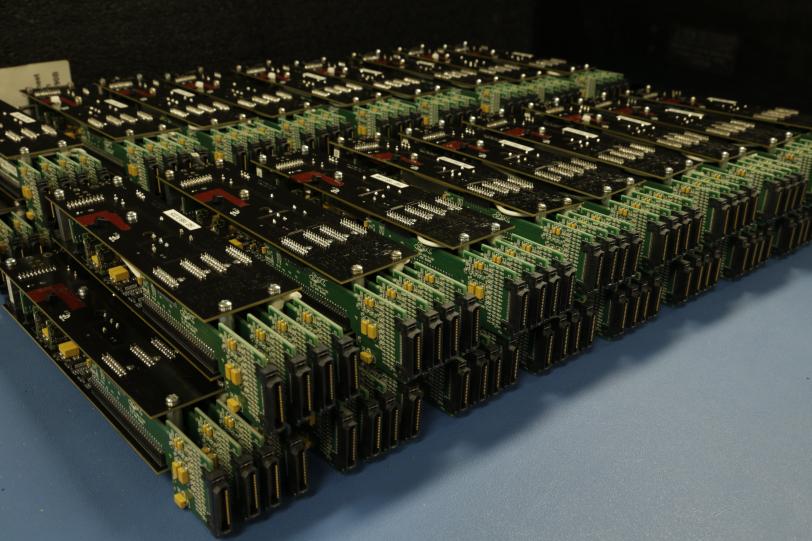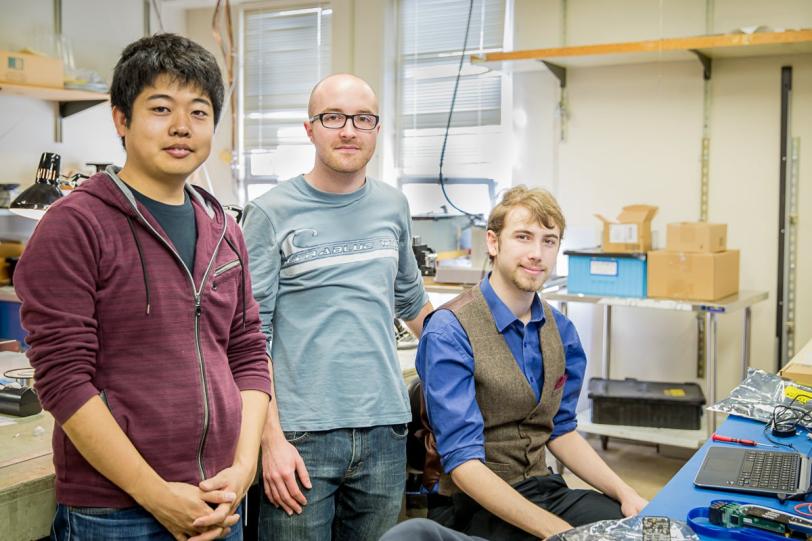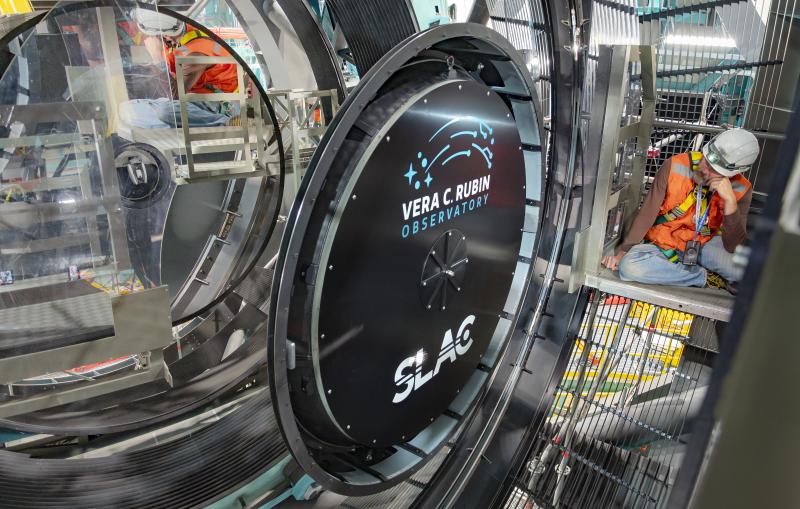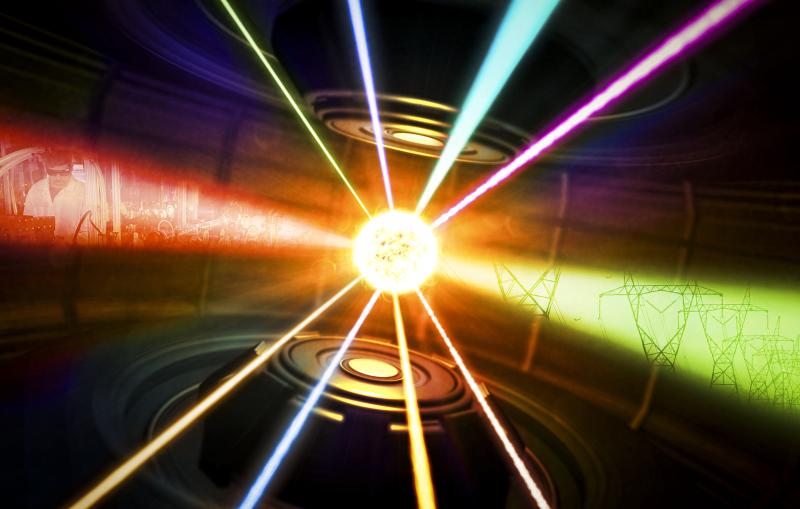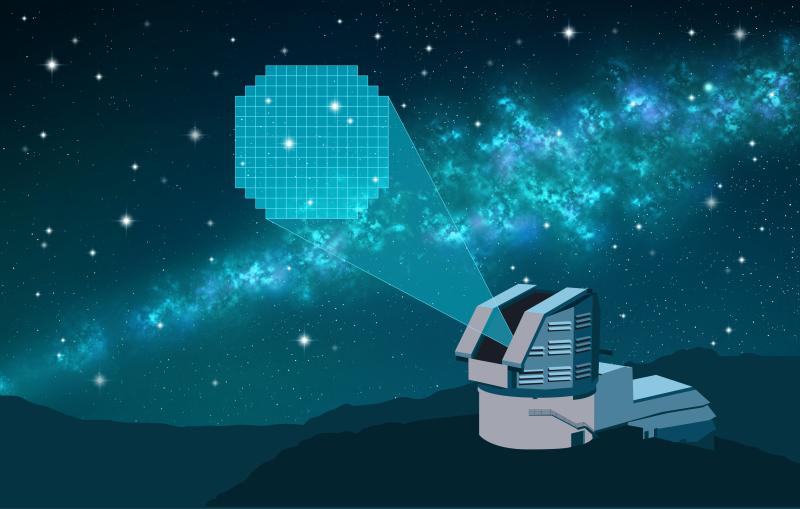Stalking Gamma Rays from the Ground
Scientists from the Kavli Institute for Particle Astrophysics and Cosmology are helping build cameras for the Cherenkov Telescope Array, an advanced, ground-based gamma-ray observatory.
By Lori Ann White
Key components for a new type of camera that will collect only the faintest, fastest flashes of light in the night sky are being assembled and tested now at SLAC. Their eventual destination: the first Compact High-energy Camera (CHEC), which will be installed in a prototype telescope for the Cherenkov Telescope Array.
The CTA is a ground-based gamma-ray observatory currently under development by an international consortium with more than 1000 members from 27 countries. The CTA will detect ultra-high-energy gamma rays, which are beyond even the reach of the Fermi Gamma-ray Space Telescope Current plans call for the observatory to comprise two separate arrays – one in the Northern Hemisphere and one in the Southern Hemisphere – totaling more than 100 telescopes of three different sizes.
The telescopes are now under development. Researchers at SLAC are testing modules of electronic components for the first CHEC camera, which will be installed on a prototype telescope later this year.
But most gamma rays from cosmic sources are blocked by the Earth’s atmosphere. What will the camera be looking at?
'Seeing' Gamma Rays
Gamma rays are the most energetic form of electromagnetic radiation – energetic enough they cause showers of secondary particles when they hit the atmosphere. The particles race toward the ground so fast they break the speed of light in our atmosphere. This is considerably slower than the speed of light in a vacuum, but still speedy enough to cause them to emit a form of radiation called Cherenkov radiation.
"It’s really just light – bluish light," said Stefan Funk, an astrophysicist at the Kavli Institute for Particle Astrophysics and Cosmology, a joint SLAC-Stanford institute. Faint blue light that flashes on and off in about five nanoseconds: "If we had nanosecond eyes, we could see it," he said.
Unfortunately we don't have nanosecond eyes, and neither do CCD cameras, which are the type of camera generally used at observatories to collect light. That's where the CHEC camera comes in.
Nanosecond Eyes
Each CHEC camera contains modules of customized electronic components, beginning with photomultipliers. A photomultiplier can capture a single photon, or particle of light, and amplify its signal for a detector to read. But the real heart of each module is a special integrated circuit chip called a TARGET chip, developed at the University of Hawaii in collaboration with SLAC researchers. Each TARGET chip can read the signals from 16 individual pixels on a photomultiplier one billion times a second – fast enough to capture the flashes of Cherenkov light.
"The prototype camera we're building uses 32 modules, each with a 64-pixel photomultiplier and four TARGET chips," said KIPAC postdoctoral researcher Luigi Tibaldo. "It will be installed on a prototype of the smallest telescope," which represents the majority of instruments needed for the arrays; the TARGET chips are also under consideration for some of the mid-sized telescopes under development. This adds up to around 60 telescopes to equip, making cost an important factor in the design.
To address this issue, the modules can easily be mass-produced, Funk said. Their colleague Gary Varner of the University of Hawaii works with industry partners to create the TARGET chips and the photomultipliers are supplied by Hamamatsu Photonics, a Japanese firm.
Later this month, after Tibaldo and his colleagues at SLAC have finished assembling and testing the modules, they'll be shipped to collaboration partners at the University of Leicester in England for more tests and final assembly into a camera, a step Funk says he's eagerly awaiting.
"The good thing about having our modules assembled into a camera now is that we'll learn a lot that will help us make the entire package – telescopes and cameras – better," he said.
Contact
For questions or comments, contact the SLAC Office of Communications at communications@slac.stanford.edu.
